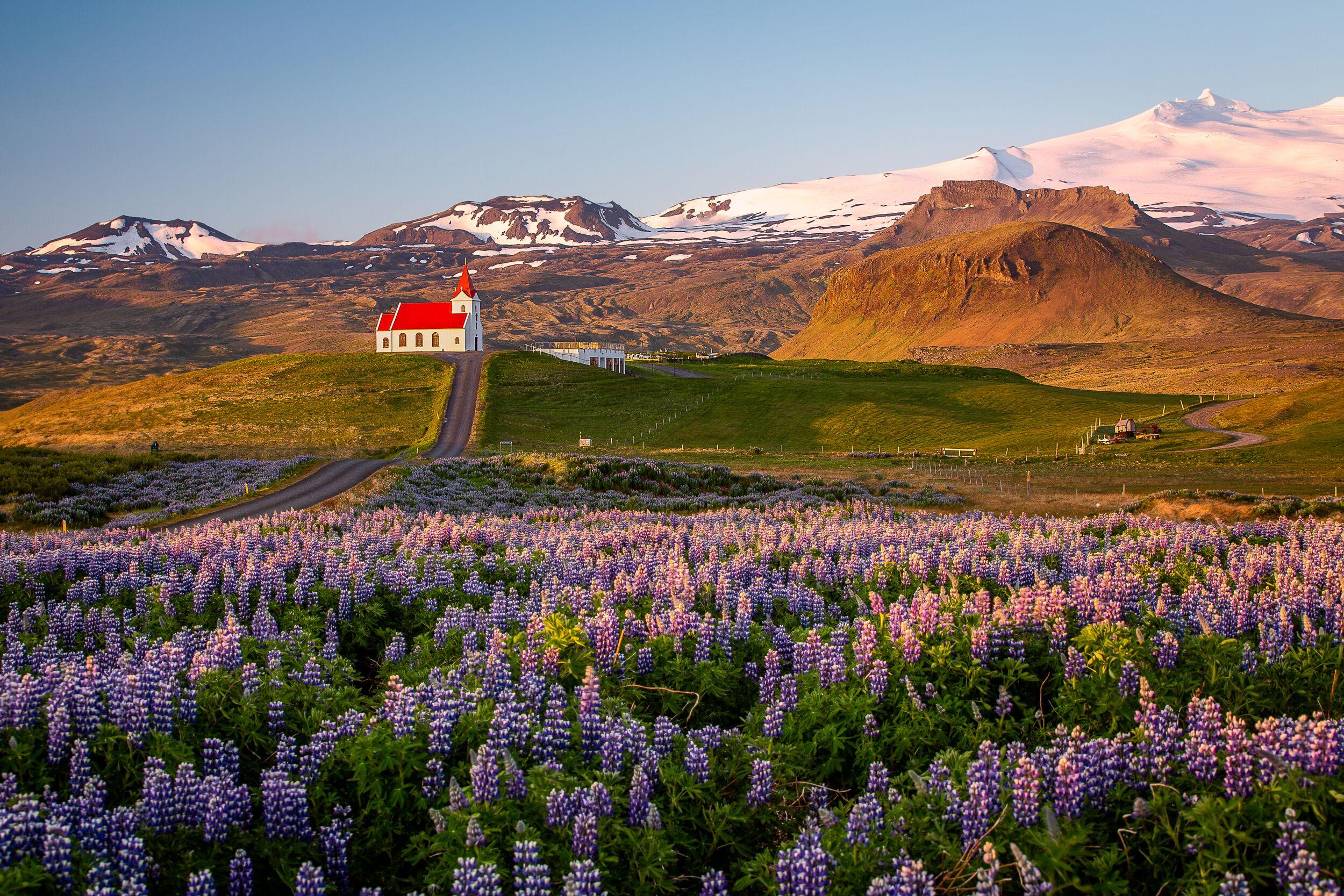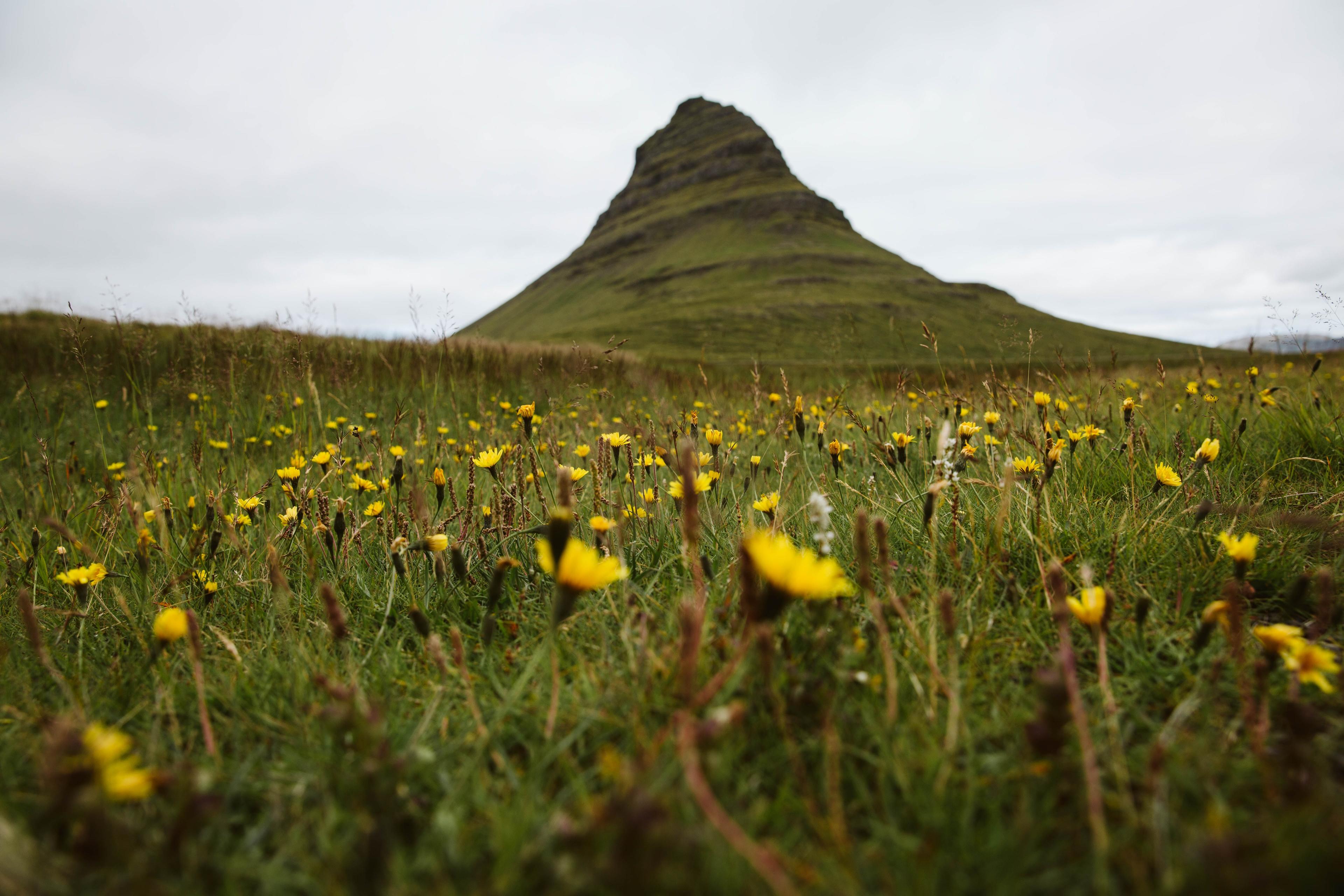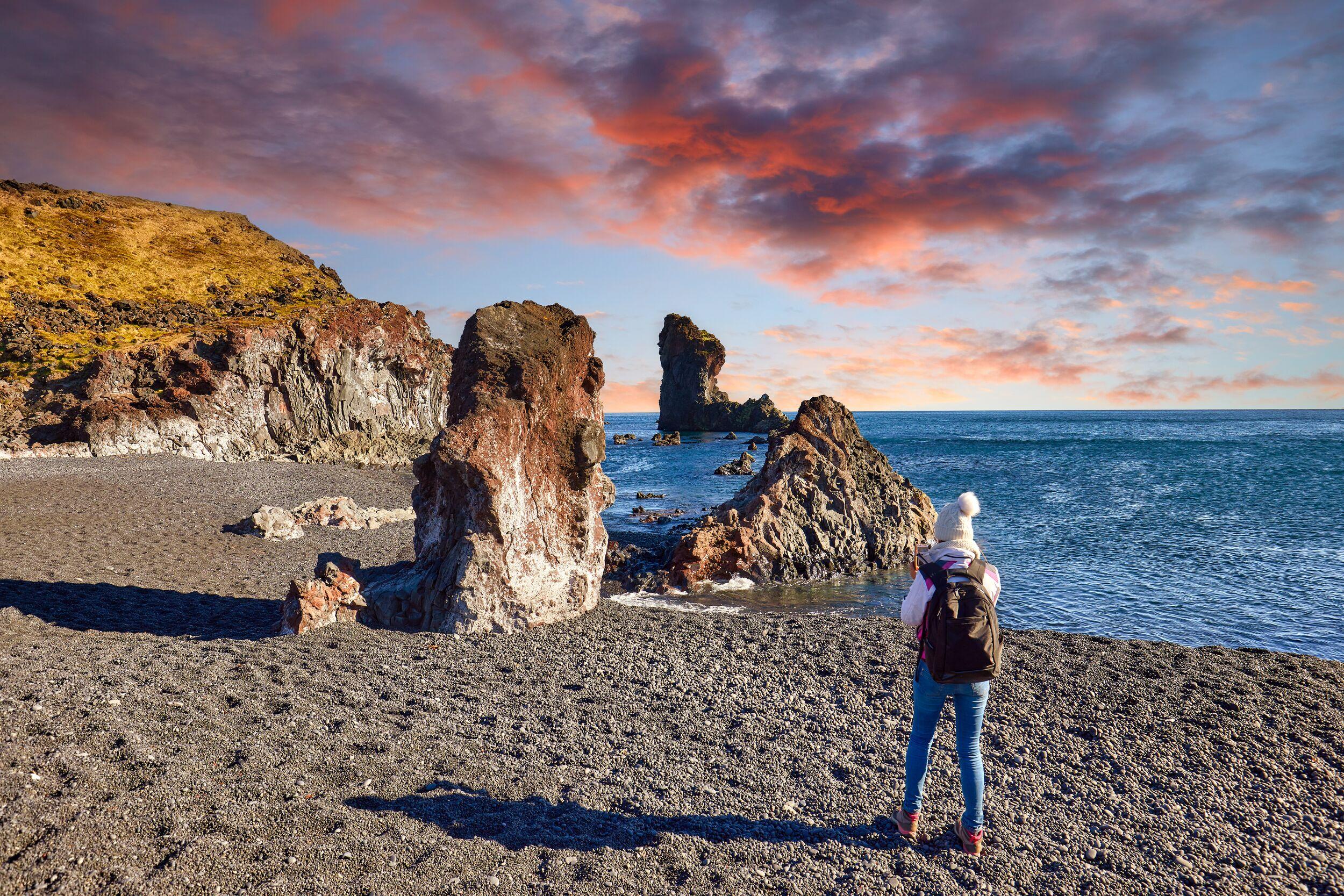
Djúpalónssandur, on the southwestern edge of the Snæfellsnes, is one of the region’s highlights. The vast beach is covered by black sand and small black stones shaped by the tides’ power and punishing winds. Visitors love to wander among the vast lava landscapes and the interesting rock formations. It’s a unique view of the volcanic landscape of Iceland. There aren’t too many places in the world that has black sand beaches.
- Best time to visit
- All year round
- Coordinates
- 64.74979135433327, -23.91304001580907
- Distance from Reykjavík
- 205km (127mi)
The geology of Djúpalónssandur
The black sand is composed of small, smooth volcanic rocks that the forces of the ocean have shaped over time. Walking along the beach provides a captivating experience, as you can see the contrast between the stark black sand and the crashing white waves of the ocean. The landscape is hauntingly beautiful, and Djúpalónssandur is a must-see attraction when travelling around West Iceland.
The surrounding scenery boasts dramatic cliffs and rock formations, adding to its unique allure. The ridges are remnants of ancient volcanic activity and are a testament to Iceland’s geological history. They provide a picturesque backdrop for visitors to enjoy while exploring the area and snapping photos.

What makes Djúpalónssandur special
One unique feature of Djúpalónssandur is the collection of mysterious iron remnants scattered across the beach. The metal pieces are the remains of a British trawler called the “Epine,” which was stranded off the coast in 1948. The wreckage serves as a poignant reminder of the ocean’s precarious nature and the challenges sailors face navigating the waters surrounding Iceland.
In addition to the wreckage, Djúpalónssandur is home to four large stones known as “lifting stones,” which have become an attraction in their own right. These stones were traditionally used to test the strength and fitness of fishermen who wanted to find work on fishing boats. Each stone has a specific weight, ranging from 23 kg to 154 kg, and lifting them was a way for fishermen to demonstrate their physical prowess. Today, visitors can try raising the stones themselves and see how they measure up to the strength of the fishermen of old. Spoiler alert: it’s not easy!

Djúpalónssandur’s location
Djúpalónssandur is part of Snæfellsjökull National Park, which encompasses the Snæfellsjökull glacier and its surrounding area. It’s a beautiful slice of Iceland and a region that is popular for travellers. The national park offers numerous hiking trails, and Djúpalónssandur is often included as a stop on these routes. Snæfellsnes is a popular destination for nature lovers, photographers and those seeking some outdoor adventure. There are glacier walking and ice climbing tours available on Snæfellsnesjökull.
How to prepare for a visit to Djúpalónssandur
When planning a visit to Djúpalónssandur, it is essential to remember that the beach can be pretty exposed and very windy. Dressing warmly and wearing sturdy footwear for exploring the area is crucial. It’s always better to dress in layers to remove if you get warm instead of not having enough warm clothing. It is also vital to respect the natural environment and refrain from taking any artefacts or disturbing the landscape. Don’t take any sand, and never leave litter.
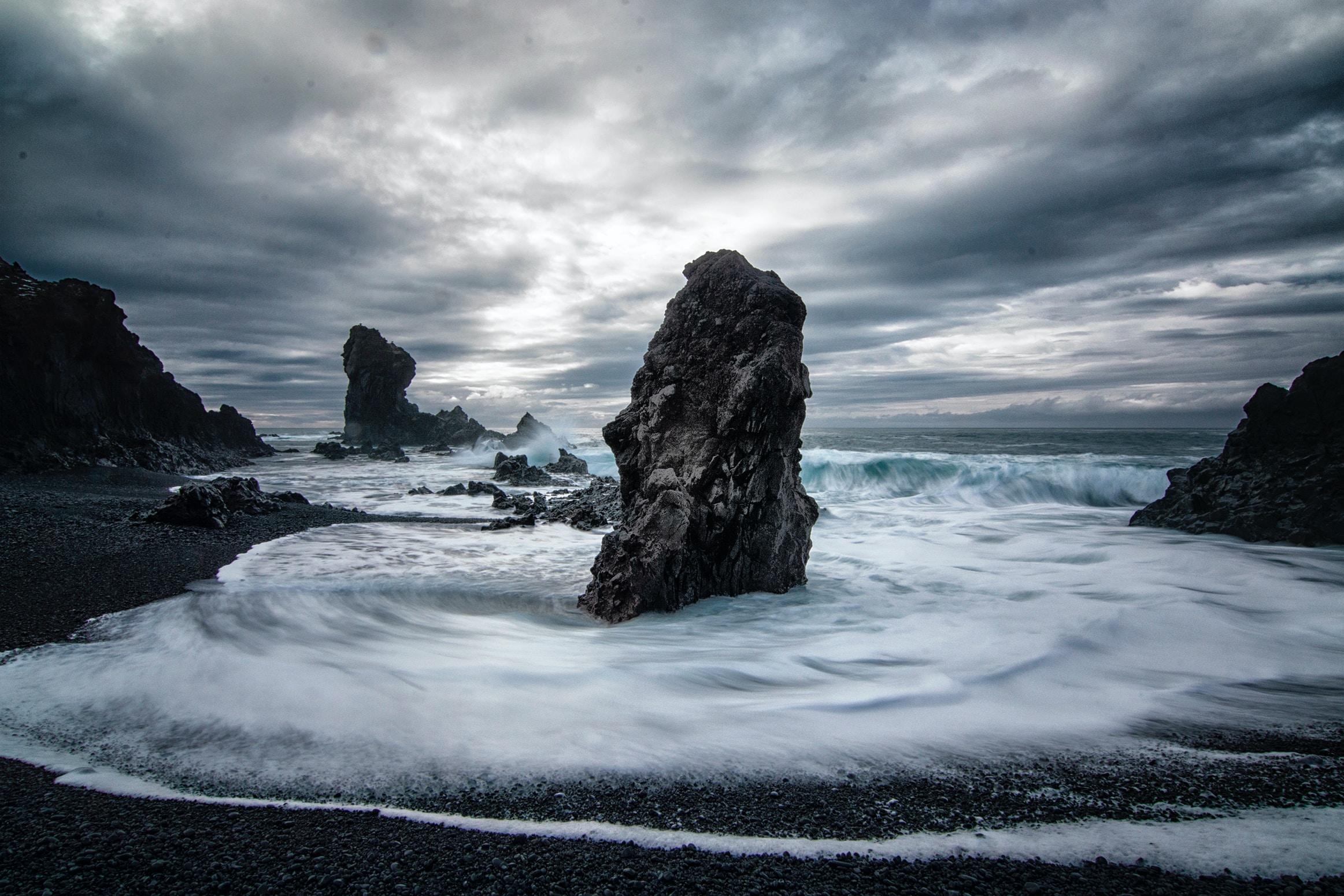
What causes black sand beaches in Iceland?
Iceland’s beaches are known for their distinctive black sand, which is primarily composed of volcanic minerals. There are a few reasons why Iceland’s beaches have black sand, including that Iceland is located on the Mid-Atlantic Ridge, a tectonic boundary where the North American and Eurasian plates meet. Iceland has a high concentration of volcanoes, both active and dormant. When volcanic eruptions occur, molten lava flows into the surrounding areas and eventually cools down, forming basalt rock. Weathering and erosion break down basalt rock over time, resulting in black volcanic sand.
Additionally, basalt, a common volcanic rock, contributes to the black sands. Basalt is rich in iron and magnesium, giving it a dark colour. When the basaltic rock is fragmented into sand-sized particles, it creates the black sand that covers Iceland’s beaches.
Another reason for the black colour of Iceland’s beaches is the absence of organic matter, such as decomposed flora and fauna, which is common in beaches with lighter-coloured sands. The volcanic nature of the sand and the relatively sparse vegetation in Iceland results in a lack of organic material, making the dark volcanic particles even more striking.
Lastly, as Iceland is home to numerous glaciers, they significantly impact the landscape and contribute to black sands. As glaciers move, freeze and melt, they erode the rocks beneath them, including volcanic material. The eroded volcanic stones are transported by rushing rivers and deposited along the coastline, contributing to the formation of black sand beaches.
Are all of Iceland’s beaches dark?
While Iceland is famous for its black sand beaches, there are also beaches with different colours, including golden and red beaches. The colour of a beach’s sand is influenced by various factors, including the geological composition of the area and the processes that shape the coastline. Iceland’s diverse landscape leads to different coloured beaches throughout the island.
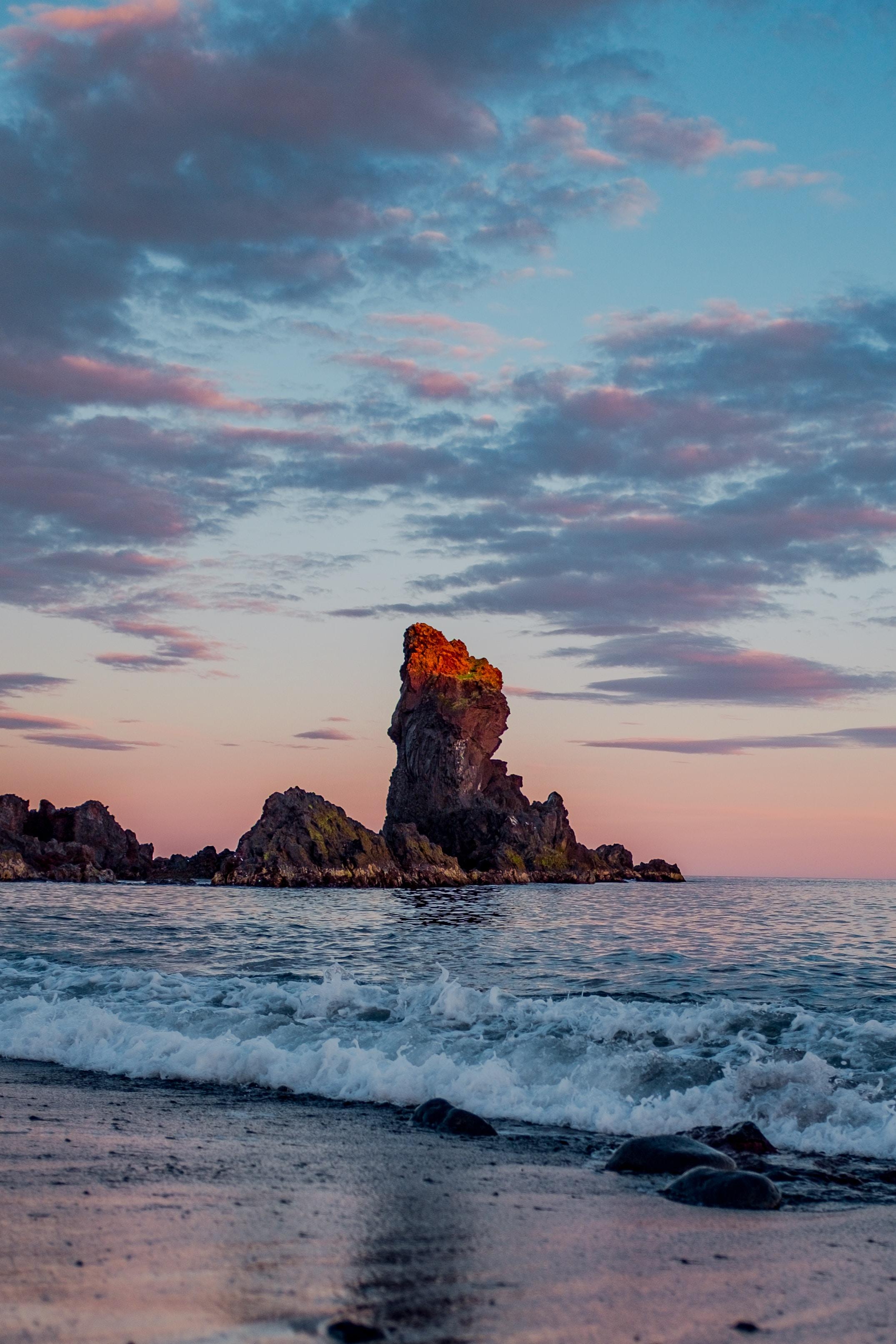
What to expect from a visit to Djúpalónssandur
Djúpalónssandur is worth visiting during a trip to the west of Iceland. Travellers can expect dramatic cliffs, rock formations and the contrasting colours of the black sands against the blue Atlantic Ocean.
FAQ
It is not recommended due to the cold temperature of the water and potentially dangerous conditions. The ocean surrounding Iceland is known for its very cold temperatures, even during the summer months, and the currents and waves can be strong and unpredictable.
Reynisfjara is likely the most famous black sand beach in all of Iceland, and for an excellent reason. Maybe it’s the stark contrast of white waves crashing on the black sand or the towering rock formations. Whatever it is, you have to see it to understand its popularity; then you’ll be glad you visited. However, travellers must pay close attention to the warning signs in the parking lot, as there are sneaker waves that can drag you out to sea; there have been fatal accidents here in recent years.
Several notable attractions on the Snæfellsnes Peninsula are nearby. Travellers can easily combine a visit to the beach with exploring places like Snæfellsjökull National Park, Kirkjufell, and the charming fishing villages of Arnarstapi and Hellnar.
Snæfellsnes is a famous region for sightseeing, hiking, and outdoor activities. Travellers can book tours to walk on Snæfellsjökull glacier and explore some actual ice in Iceland, and it’s an impossibly beautiful and diverse region of the island.
There are numerous guided tours of the Snæfellsnes Peninsula that include a stop at Djúpalónssandur.
Djúpalónssandur is still relatively untouched and less crowded compared to some other attractions in Iceland. It offers a peaceful and tranquil atmosphere, perfect for a quiet walk along the beach to soak in the natural beauty.
Djúpalónssandur offers travellers a unique blend of natural beauty, moody intrigue, and a sense of calmness. It’s a fantastic destination for nature lovers, photographers, and those seeking a more off-the-beaten-path experience in Iceland.
Please note that road conditions in Iceland can vary, especially during winter, so it’s essential to check the weather and road conditions before embarking on your journey. Additionally, if you prefer not to drive, you can consider joining a guided tour that specifically includes Djúpalónssandur in its itinerary.
Most tours to the Snæfellsnes Peninsula start in Reykjavík. However, you can rent a car to reach Djúpalónssandur. The journey from Reykjavik takes approximately 2 to 2.5 hours by car. Drivers must leave Reykjavik and head north on Route 1 (also known as the Ring Road) until you reach the town of Borgarnes. From Borgarnes, take Road 54 (Snæfellsnesvegur) to reach the Snæfellsnes Peninsula. Continue driving on Road 54 until you reach the small village of Hellnar, and Djúpalónssandur is just a short distance away.
The Snæfessness Peninsula spans about 56 miles long and is located in the west of Iceland. The western section of the Snæfellsnes Peninsula is home to Snæfellsjökull National Park and small towns like Hellissandur, Ólafsvík, and Grundarfjörður. The Snæfellsjökull glacier, which lies on top of a volcano in the centre of the national park, is the main event for many travellers visiting the region.
The best time of year to visit Djúpalónssandur depends on what you want to see and do. For instance, for long days of sunlight and milder temperatures, June to August is an ideal time to visit the Snæfellsnes Peninsula. Visiting Djúpalónssandur in the summer allows you to enjoy the beautiful black sand beach and the picturesque landscape to its fullest. You’ll also have a better chance of experiencing clearer skies and better visibility for sightseeing.
However, winter can be a lovely time to visit the beach as the soft light of winter provides a moodier and more dramatic view. But, be aware that winter conditions in Iceland can be harsh, with limited daylight hours and potentially difficult road conditions. The safest way to explore the Snæfellsnes Peninsula in winter is through a guided tour.
When travelling to Iceland, it’s vital to keep in mind that weather conditions can be unpredictable, even during the summer months. Rain and wind can occur at any time, so it’s always a good idea to come prepared with appropriate clothing and be prepared for various weather conditions.
Related tours
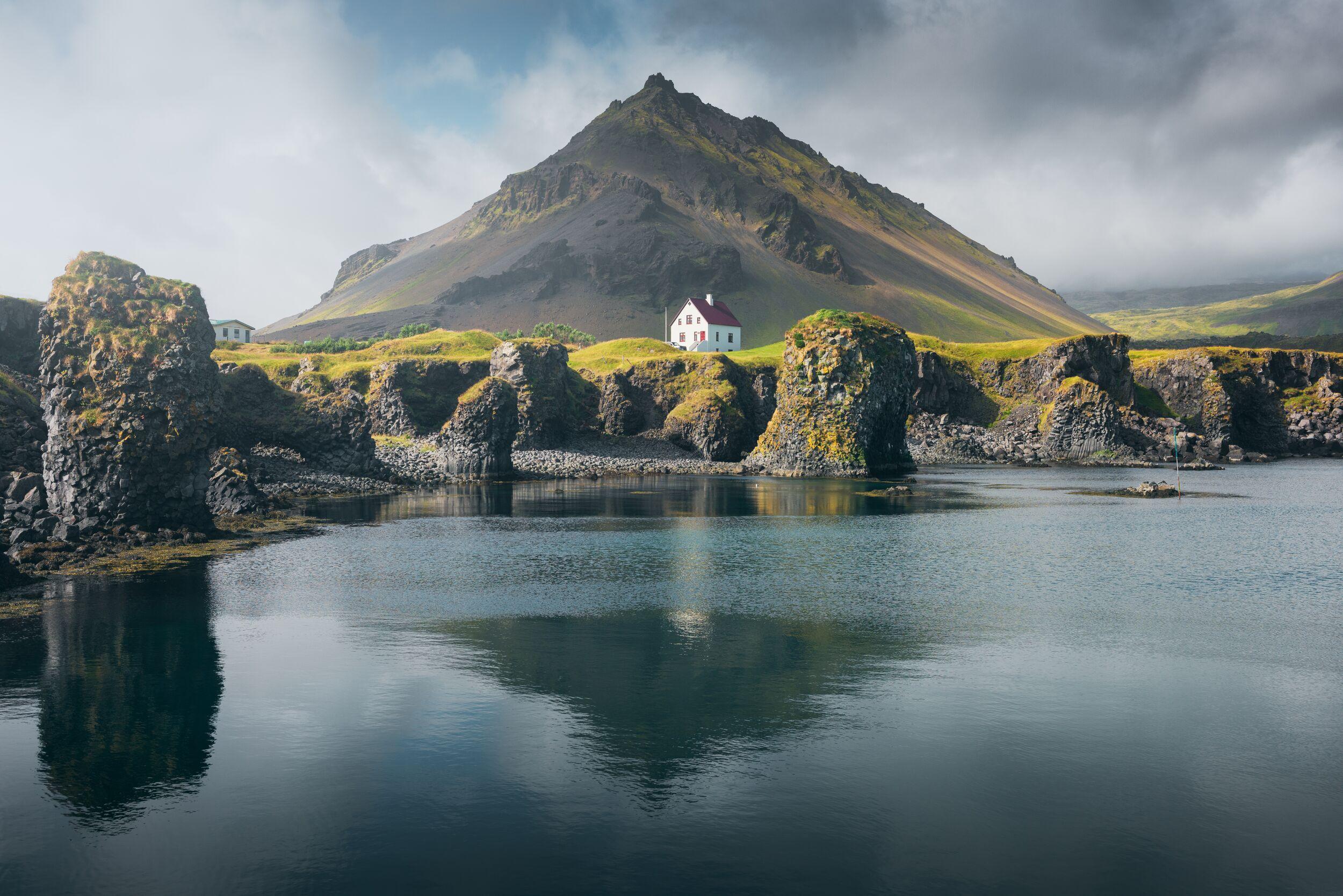
Wonders of Snaefellsnes Peninsula - Small Group Tour
Snaefellsnes peninsula is called "Iceland in Miniature" for a good reason: the region showcases raw beauty, glacier-capped volcanoes, postcard-worthy landscapes, dramatic cliffs, black sand beaches, and charming fishing villages. Yet, unlike other popular day trips from Reykjavík, it offers something rare: solitude. With fewer visitors, it’s the ideal escape for those seeking Iceland’s breathtaking scenery without the crowds.

Icelandic Wellness Package - 6-Day
Golden Circle, Blue Lagoon, Reykjavík Food Walk, Snæfellsnes. Relax, recharge, and explore Iceland’s most stunning natural wonders with this 6-day (5-night) Icelandic Wellness package. This tour blends ultimate relaxation with breathtaking landscapes, Icelandic flavors and seamless travel with carbon-neutral transportation and expert local guides.


